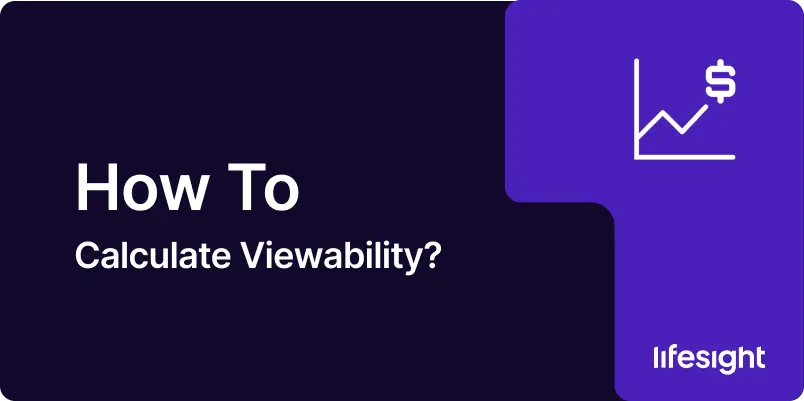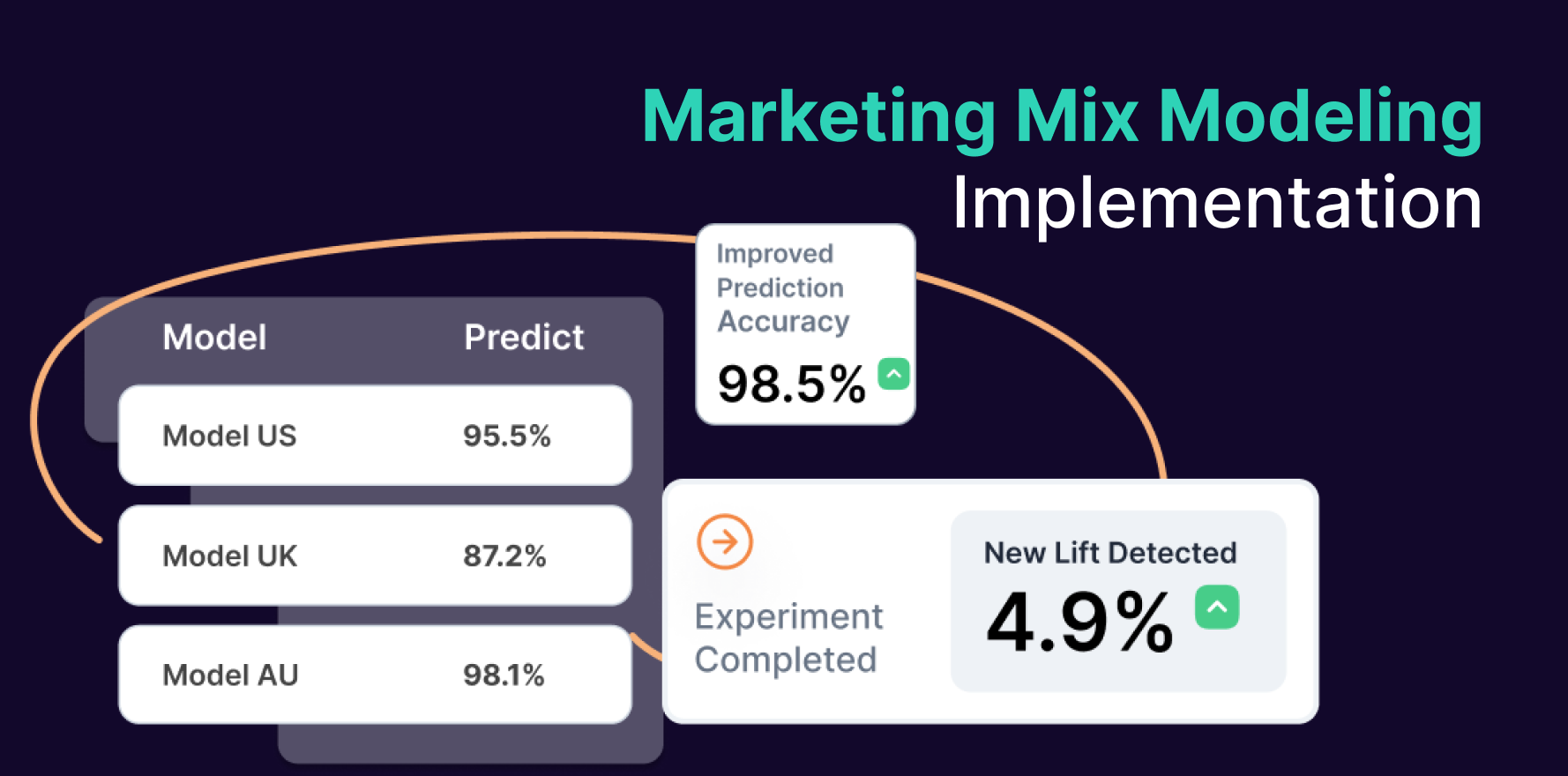
In the ever-evolving landscape of digital advertising, viewability has emerged as a crucial metric for measuring the effectiveness and value of online ad placements. As marketers and advertisers, understanding how to calculate and interpret viewability can significantly impact the success of your campaigns and the allocation of your advertising budget. This guide will walk you through the ins and outs of viewability, from basic calculations to advanced strategies for optimizing your digital ad performance.
What is Viewability?
Before we dive into the calculations, let’s define what we mean by viewability:
Viewability is a metric that measures the opportunity for an online advertisement to be seen by a human viewer. It’s expressed as a percentage of ad impressions that are considered viewable out of the total number of measured ad impressions.
For digital advertisers, understanding viewability is crucial because it:
- Ensures ads have a chance to make an impact
- Helps in assessing the quality of ad placements
- Informs budget allocation across different platforms and placements
- Provides a basis for performance optimization
- Aligns with industry standards for ad measurement
Industry Standards for Viewability
The Interactive Advertising Bureau (IAB) and Media Rating Council (MRC) have set the following standards for viewability:
- Display Ads: At least 50% of the ad’s pixels must be in view for a minimum of one continuous second.
- Large Display Ads (greater than 242,500 pixels): At least 30% of the ad’s pixels must be in view for a minimum of one continuous second.
- Video Ads: At least 50% of the ad’s pixels must be in view for a minimum of two continuous seconds.
Keep these standards in mind as we delve into the calculations.
The Basic Formula for Viewability
The basic formula for calculating viewability is:
Viewability Rate = (Number of Viewable Impressions / Total Measured Impressions) x 100
This gives you the percentage of ad impressions that met the viewability criteria.
Step-by-Step Guide to Calculating Viewability
Let’s break down the process of calculating viewability with a practical example relevant to digital advertising professionals.
Step 1: Determine Your Measurement Period
First, decide on the period for which you want to calculate viewability. This could be:
- Daily
- Weekly
- Monthly
- Per campaign
For this example, let’s use data from a month-long display ad campaign.
Step 2: Gather Your Impression Data
You’ll need two key pieces of information:
- Total number of measured ad impressions
- Number of viewable impressions (those meeting the IAB/MRC criteria)
Let’s say for your campaign:
- Total Measured Impressions: 1,000,000
- Viewable Impressions: 700,000
Step 3: Apply the Viewability Formula
Now, let’s plug these numbers into our formula:
Viewability Rate = (700,000 / 1,000,000) x 100 = 70%
This means that 70% of your ad impressions were viewable according to the industry standard.
Interpreting Viewability in Advertising Contexts
Now that we’ve calculated viewability, what does this mean for your digital advertising strategies?
- Ad Placement Quality: Higher viewability rates generally indicate better ad placement quality.
- Campaign Effectiveness: While viewability doesn’t guarantee engagement, it’s a prerequisite for ad effectiveness.
- Budget Allocation: Placements with higher viewability rates may deserve larger budget allocations.
- Performance Benchmarking: Compare your viewability rates against industry benchmarks to assess performance.
- Pricing Negotiations: Use viewability data to negotiate better rates with publishers or ad networks.
Real-World Applications in Digital Advertising
Let’s explore some specific scenarios where calculating viewability can inform your advertising decisions:
1. Comparing Ad Formats
Scenario: You’re running both display and video ads and want to compare their viewability.
Display Ads:
- Total Impressions: 500,000
- Viewable Impressions: 300,000
- Viewability Rate: (300,000 / 500,000) x 100 = 60%
Video Ads:
- Total Impressions: 200,000
- Viewable Impressions: 140,000
- Viewability Rate: (140,000 / 200,000) x 100 = 70%
The higher viewability rate for video ads might suggest allocating more budget to this format, assuming other performance metrics are comparable.
2. Evaluating Ad Networks
Scenario: You’re using two different ad networks and want to assess their performance in terms of viewability.
Network A:
- Total Impressions: 750,000
- Viewable Impressions: 525,000
- Viewability Rate: (525,000 / 750,000) x 100 = 70%
Network B:
- Total Impressions: 600,000
- Viewable Impressions: 360,000
- Viewability Rate: (360,000 / 600,000) x 100 = 60%
The higher viewability rate on Network A might indicate better ad placement quality, potentially justifying higher spend or negotiating better rates on this network.
3. Optimizing Ad Placements
Scenario: You’re running ads on a publisher’s website across different placements.
Above-the-fold Placement:
- Total Impressions: 300,000
- Viewable Impressions: 240,000
- Viewability Rate: (240,000 / 300,000) x 100 = 80%
Below-the-fold Placement:
- Total Impressions: 200,000
- Viewable Impressions: 100,000
- Viewability Rate: (100,000 / 200,000) x 100 = 50%
The significant difference in viewability rates might lead you to prioritize above-the-fold placements or negotiate lower rates for below-the-fold inventory.
Advanced Considerations in Viewability Calculations
As you become more proficient with basic viewability calculations, consider these advanced concepts:
1. Viewable CPM (vCPM)
Instead of paying for all impressions, some platforms offer vCPM pricing where you only pay for viewable impressions:
vCPM = (Total Cost / Viewable Impressions) x 1000
This can provide a more accurate measure of the true cost of reaching your audience.
2. Time-in-View Metrics
Beyond the basic viewability threshold, measuring how long ads remain in view can provide insights into potential engagement:
Average Time-in-View = Total Viewable Time / Number of Viewable Impressions
3. Viewability by Device
Calculate viewability rates separately for desktop, mobile, and tablet to optimize your cross-device strategies:
Mobile Viewability Rate = (Mobile Viewable Impressions / Total Mobile Impressions) x 100
4. Viewability and Engagement Correlation
Analyze the relationship between viewability and engagement metrics like click-through rate (CTR):
Engagement Rate for Viewable Impressions = (Clicks on Viewable Impressions / Viewable Impressions) x 100
Common Pitfalls to Avoid
When working with viewability in digital advertising, watch out for these common mistakes:
- Ignoring Non-Measurable Impressions: Some impressions may not be measurable due to technical limitations. Don’t forget to account for these in your analysis.
- Overemphasizing Viewability: While important, viewability shouldn’t be the only metric guiding your decisions. Balance it with other performance indicators.
- Neglecting Creative Impact: High viewability doesn’t guarantee ad effectiveness. The quality of your creative still matters significantly.
- Misinterpreting Benchmarks: Industry benchmarks can vary by format, device, and region. Ensure you’re using relevant comparisons.
- Overlooking Viewability Fraud: Be aware of potential fraudulent practices that artificially inflate viewability rates.
Tools for Viewability Analysis
Several tools can assist you in measuring and analyzing viewability:
- Ad Verification Services: Companies like Integral Ad Science, DoubleVerify, and Moat provide detailed viewability measurements.
- Google Active View: Integrated into Google Ads and Google Ad Manager, it offers viewability metrics for your campaigns.
- Publisher-Specific Tools: Many major publishers and platforms offer their own viewability measurement tools.
- Custom Analytics Dashboards: Many agencies develop custom dashboards that integrate viewability data with other performance metrics.
- IAB’s Open Measurement SDK: This open-source solution allows for consistent measurement across different environments.
Leveraging Viewability in Your Advertising Strategy
Understanding and effectively using viewability calculations can significantly enhance your digital advertising efforts. Here’s how you can leverage this metric:
- Inventory Quality Assessment: Use viewability to assess the quality of ad inventory and inform purchasing decisions.
- Performance Optimization: Continuously monitor viewability to optimize ad placements and formats.
- Budget Allocation: Shift budget towards placements, formats, and channels with higher viewability rates.
- Pricing Negotiations: Use viewability data to negotiate better rates or viewability guarantees with publishers.
- Creative Design: Design ads with viewability in mind, ensuring key messages are visible even in brief view times.
- Cross-Channel Comparison: Use viewability as a common metric to compare performance across different channels and platforms.
- Client Reporting: Include viewability metrics in client reports to demonstrate the value and effectiveness of your ad placements.
Conclusion: Making Viewability Work for Your Advertising Campaigns
Viewability has become a cornerstone metric in digital advertising, bridging the gap between served impressions and the opportunity for real human interaction with ads. By mastering the calculation and interpretation of viewability, you equip yourself with a powerful tool to drive more effective, efficient advertising campaigns.
Remember, while viewability is crucial, it’s just one piece of the puzzle. The most successful digital advertising strategies balance viewability with other key performance indicators like engagement rates, conversion rates, and ultimately, return on ad spend.
As you continue to refine your approach to measuring and optimizing viewability, you’ll develop a more nuanced understanding of how your ads perform in the wild. This knowledge will empower you to create more impactful campaigns, negotiate better deals with publishers, and deliver superior results for your clients or company.
So, the next time you’re planning a digital ad campaign, evaluating ad inventory, or making a case for budget allocation, remember to leverage your viewability data. It might just be the key to unlocking your next big advertising breakthrough!
Free essential resources for success
Discover more from Lifesight















